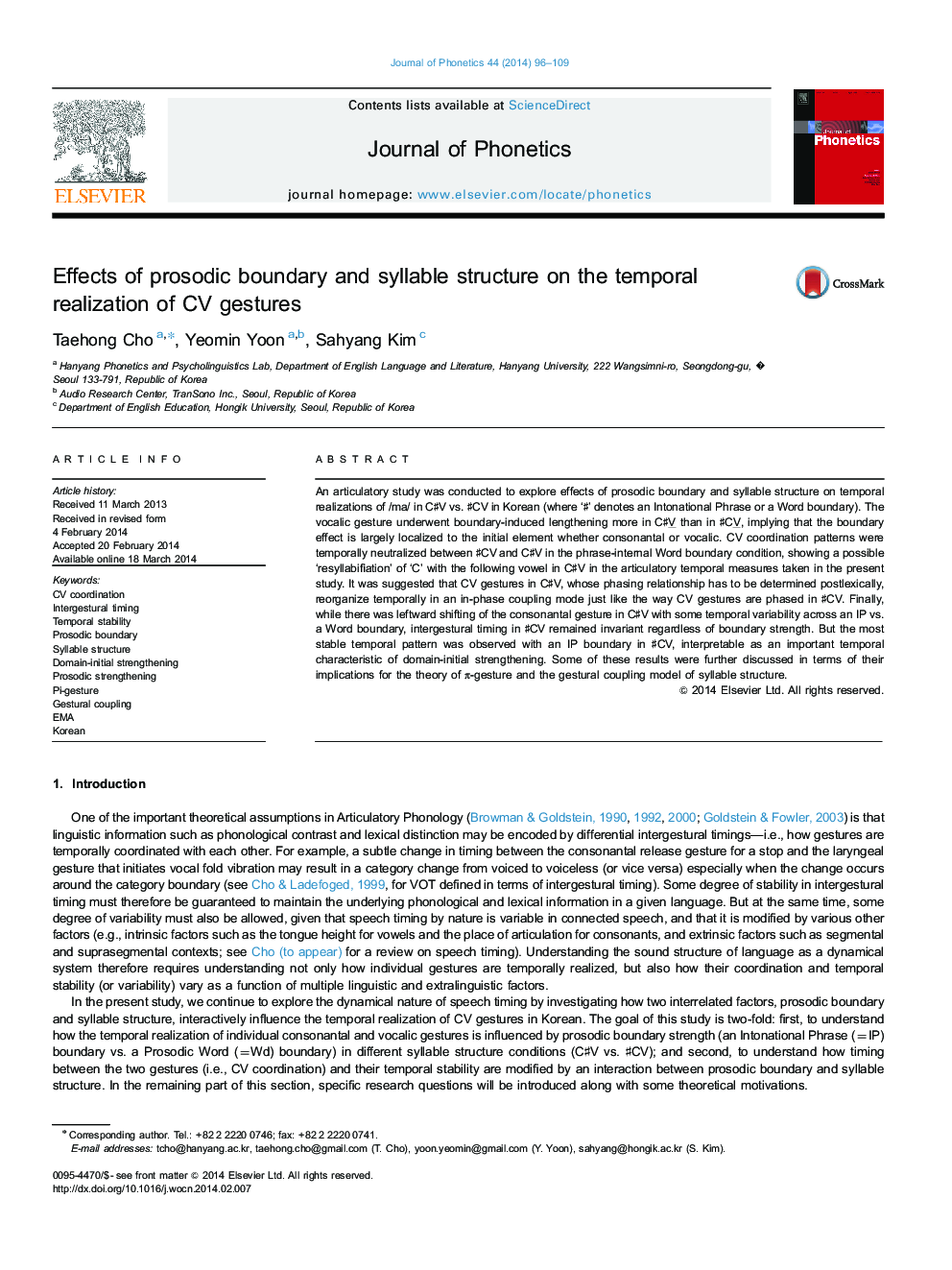| Article ID | Journal | Published Year | Pages | File Type |
|---|---|---|---|---|
| 7533004 | Journal of Phonetics | 2014 | 14 Pages |
Abstract
An articulatory study was conducted to explore effects of prosodic boundary and syllable structure on temporal realizations of /ma/ in Câ¯V vs. â¯CV in Korean (where 'â¯' denotes an Intonational Phrase or a Word boundary). The vocalic gesture underwent boundary-induced lengthening more in Câ¯V than in â¯CV, implying that the boundary effect is largely localized to the initial element whether consonantal or vocalic. CV coordination patterns were temporally neutralized between â¯CV and Câ¯V in the phrase-internal Word boundary condition, showing a possible 'resyllabifiation' of 'C' with the following vowel in Câ¯V in the articulatory temporal measures taken in the present study. It was suggested that CV gestures in Câ¯V, whose phasing relationship has to be determined postlexically, reorganize temporally in an in-phase coupling mode just like the way CV gestures are phased in â¯CV. Finally, while there was leftward shifting of the consonantal gesture in Câ¯V with some temporal variability across an IP vs. a Word boundary, intergestural timing in â¯CV remained invariant regardless of boundary strength. But the most stable temporal pattern was observed with an IP boundary in â¯CV, interpretable as an important temporal characteristic of domain-initial strengthening. Some of these results were further discussed in terms of their implications for the theory of Ï-gesture and the gestural coupling model of syllable structure.
Related Topics
Social Sciences and Humanities
Arts and Humanities
Language and Linguistics
Authors
Taehong Cho, Yeomin Yoon, Sahyang Kim,
